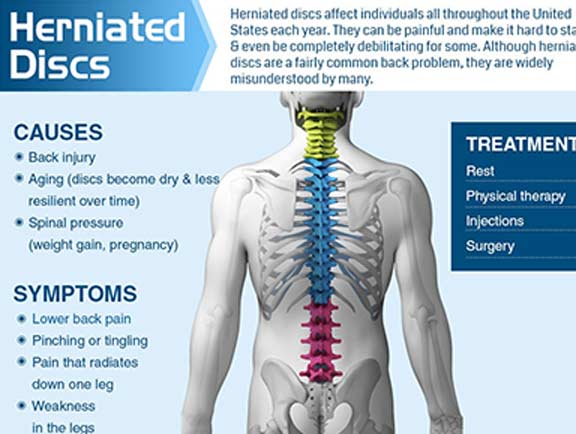Pain relief strategies has significantly changed considerably over the years, transitioning from conventional practices towards far more innovative and integrated treatments. As we continue to learn about pain's complexities, the demand for thorough pain management solutions and therapies is increasingly clear. Understanding what pain management is and the various techniques available can enable individuals experiencing acute and chronic pain alike, ultimately leading to a better quality of life.
Various pain types necessitate tailored strategies for effective relief, and contemporary treatments encompass a variety of options. From physical therapy and chiropractic care to innovations in interventional therapies and regenerative medicine, there are countless routes to consider. Additionally, the integration of complementary therapies such as acupuncture and mindfulness practices showcases a progressive strategy for pain therapy, focusing on not just the tangible symptoms of pain but also the psychological and lifestyle components involved. By examining these cutting-edge approaches, we aim to highlight the complex nature of pain management and the promising future it holds.
Understanding Discomfort & Its Control
Discomfort is an intricate and subjective feeling, often characterized as an unpleasant sensory-based and affective response to real or possible body injury. Grasping discomfort involves recognizing its two primary categories: sharp and persistent. Sharp pain, usually a straightforward response to trauma or illness, is short-term and usually settles with treatment. Conversely, chronic discomfort remains for an extended after the first harm has healed, often becoming a complex condition shaped by bodily, mental, and societal factors. This differentiation is crucial in establishing the suitable discomfort management strategies.
Effective pain management includes a wide array of interventions tailored to personal needs. A comprehensive method includes not only drugs but also physiotherapeutic treatments, mental help, and alternative treatments. Discomfort treatment facilities are important support systems, prepared to create personalized care programs that may involve invasive procedures, lifestyle changes, and integrative treatments. By tackling the multifaceted character of pain, these facilities strive to enhance overall quality of life for patients.
In the last few years, advancements in grasping the study behind discomfort have resulted in new treatment possibilities. Research into the discomfort routes and processes has enabled the formation of focused treatments such as regenerative healthcare, nerve interferences, and neuromodulation techniques. Additionally, the search of alternative options, including acupressure and mindfulness techniques, demonstrates a change towards more holistic methods in discomfort treatment. This transformation emphasizes empowering clients to take an proactive part in their recovery journey, improving their capability to control pain efficiently.
Cutting-edge Therapies and Approaches
In the field of pain management, new therapies are emerging that offer new hope for people dealing from multiple types of discomfort. One such advancement is the use of nerve stimulation methods, which involve activating specific neurons to alter pain sensation and response. Instruments such as spinal stimulators and peripheral nerve stimulators provide individuals with personalized pain management options that can greatly improve their daily living. These methods fuse sophisticated technology with a deep comprehension of pain mechanisms, allowing for focused treatments that adjust to the individual's needs.
Another revolutionary method is the implementation of regenerative medicine techniques like stem cell therapy and platelet-rich plasma (PRP) treatments. These treatments focus on restoring injured tissues and minimizing inflammation, which can alleviate both sudden and persistent discomfort. By utilizing the body's natural healing processes, these therapies provide an option to standard pain management methods, offering the promise for longer-lasting relief without the need on pharmaceuticals. This natural approach is increasingly inviting to people seeking safer options for pain management.
In addition, complimentary treatments such as acupuncture and mindfulness therapies have become popular due to their comprehensive methodology to pain management. Acupuncture involves placing fine needles into specific areas on the body to stimulate the nervous system, which can lead to the release of natural painkillers and other chemicals. Similarly, mindfulness practices help people develop greater perception of their pain feelings, furnishing them with the tools to tackle pain effectively. Together, these groundbreaking therapies highlight the progress of pain management, focusing on individualized treatment and flexible treatment modalities.
Living Style and Whole-Person Approaches to Pain Relief
Integrating lifestyle changes and holistic methods into pain relief can markedly improve one’s quality of life. Consistent exercise is important, as it not only strengthens muscle strength and raises flexibility but also releases natural pain relievers, which are innate pain alleviators. Exercises like strolling, swimming, and biking can be tailored to personal fitness levels, ensuring they are both secure and effective. Additionally, including foods that reduce inflammation into the meal plan, such as fresh produce, greens, seeds, and fatty fish, can assist lessen inflammation and mitigate symptoms of chronic pain.

Being present and relaxation techniques play a key role in managing pain awareness. Practices such as thoughtful silence, breathing deeply, and stretching not only reduce stress but also assist individuals grow more aware of their physical state and pain signals. Engaging in https://posteezy.com/rehabilitation-and-pain-control-journey-restoration can lower anxiety levels, which are often connected to heightened pain awareness. Yoga, in specific, offers the dual advantage of gentle movement while encouraging relaxation and deeper mental focus, making it a powerful tool for those dealing with chronic pain.
Finally, having a good sleep routine remains essential for relieving pain. Poor quality of sleep can intensify pain and form a harmful loop of discomfort and insomnia. Establishing a regular sleep schedule, creating a restful environment, and steering clear of caffeine before bed can encourage better sleep. Focusing on restorative practices like gentle stretching or warm baths in the evening can further get the body for rest, leading to better recovery and reduced pain levels during the day.
